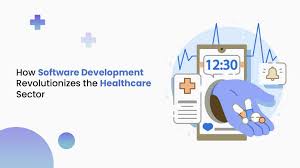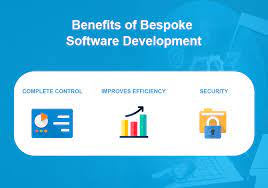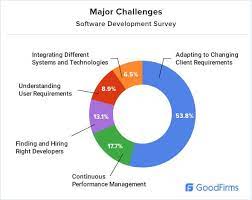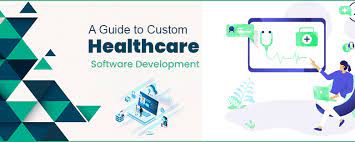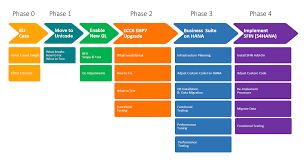Revolutionizing Real Estate: The Power of Software Development in the Industry
The Impact of Real Estate Software Development in the Industry
Real estate software development has revolutionized the way professionals in the industry manage their operations. From property management to customer relationship management, software solutions have streamlined processes and enhanced efficiency.
Benefits of Real Estate Software Development
**Improved Efficiency**: Real estate software automates repetitive tasks such as listing management, document processing, and client communication, allowing agents to focus on more strategic activities.
**Enhanced Customer Experience**: With CRM software, real estate professionals can track interactions with clients, personalize communications, and provide better service throughout the buying or selling process.
**Data Analysis**: Real estate software provides valuable insights through data analytics, helping agents make informed decisions based on market trends, pricing strategies, and customer preferences.
Key Features of Real Estate Software
**Property Listing Management**: Software solutions enable agents to create detailed property listings with images, descriptions, and pricing information for easy access by potential buyers.
**Transaction Management**: From offer submission to closing deals, real estate software helps streamline transaction processes by organizing documents, deadlines, and communication between parties.
**Marketing Tools**: Real estate software often includes marketing features such as email campaigns, social media integration, and lead generation tools to attract potential buyers or sellers.
The Future of Real Estate Software Development
As technology continues to evolve, real estate software development will play an even more significant role in shaping the industry. Integration of artificial intelligence for predictive analytics, virtual reality for property tours, and blockchain for secure transactions are just a few examples of innovations that will drive the future of real estate technology.
6 Essential Tips for Developing Effective Real Estate Software
- Understand the needs of real estate professionals before designing the software.
- Ensure the software is user-friendly and easy to navigate for agents and clients.
- Implement features for property listings, virtual tours, and online booking.
- Include a secure payment gateway for transactions within the software.
- Integrate analytics tools to track performance and user engagement.
- Regularly update the software to incorporate new technologies and stay competitive.
Understand the needs of real estate professionals before designing the software.
Understanding the needs of real estate professionals is crucial before embarking on the design of real estate software. By conducting thorough research and engaging with industry experts, developers can tailor software solutions to address specific challenges faced by real estate agents, brokers, and property managers. This approach ensures that the software not only meets but exceeds the expectations of users, resulting in a more efficient and effective tool for managing properties, transactions, and client relationships in the real estate industry.
Ensure the software is user-friendly and easy to navigate for agents and clients.
When developing real estate software, it is crucial to prioritize user-friendliness and ease of navigation for both agents and clients. Intuitive design and seamless functionality enhance the overall user experience, making it easier for agents to manage properties efficiently and for clients to search for their dream homes effortlessly. By ensuring that the software is user-friendly, real estate professionals can maximize productivity and provide a positive experience for their clients, ultimately leading to improved satisfaction and success in the industry.
Implement features for property listings, virtual tours, and online booking.
In real estate software development, it is crucial to implement features that enhance the user experience and streamline processes. By incorporating functionalities for property listings, virtual tours, and online booking, agents can provide potential buyers with comprehensive information about properties, offer immersive virtual experiences for remote viewing, and facilitate convenient booking arrangements. These features not only attract more interest from clients but also improve efficiency in managing property transactions, ultimately leading to a more seamless and satisfying real estate experience for all parties involved.
Include a secure payment gateway for transactions within the software.
Integrating a secure payment gateway within real estate software development is crucial for ensuring safe and efficient transactions. By incorporating a reliable payment processing system, users can confidently make payments for property purchases or rentals directly through the software platform. This feature not only enhances convenience for clients but also instills trust in the system, protecting sensitive financial information and reducing the risk of fraud. A secure payment gateway adds a layer of security and professionalism to the real estate software, making it a valuable asset for both agents and customers alike.
Integrate analytics tools to track performance and user engagement.
Integrating analytics tools into real estate software development is crucial for monitoring performance and user engagement. By leveraging analytics, professionals in the industry can gain valuable insights into how users interact with their platforms, track key metrics such as website traffic and conversion rates, and make data-driven decisions to optimize their services. This proactive approach not only improves the overall user experience but also helps real estate businesses stay competitive in a rapidly evolving market.
Regularly update the software to incorporate new technologies and stay competitive.
To stay competitive in the real estate industry, it is crucial to regularly update your software to incorporate new technologies. By embracing the latest advancements in software development, real estate professionals can enhance their efficiency, improve customer experience, and adapt to changing market demands. Updating the software ensures that you are equipped with cutting-edge tools and features that give you a competitive edge in a dynamic and fast-paced industry.





